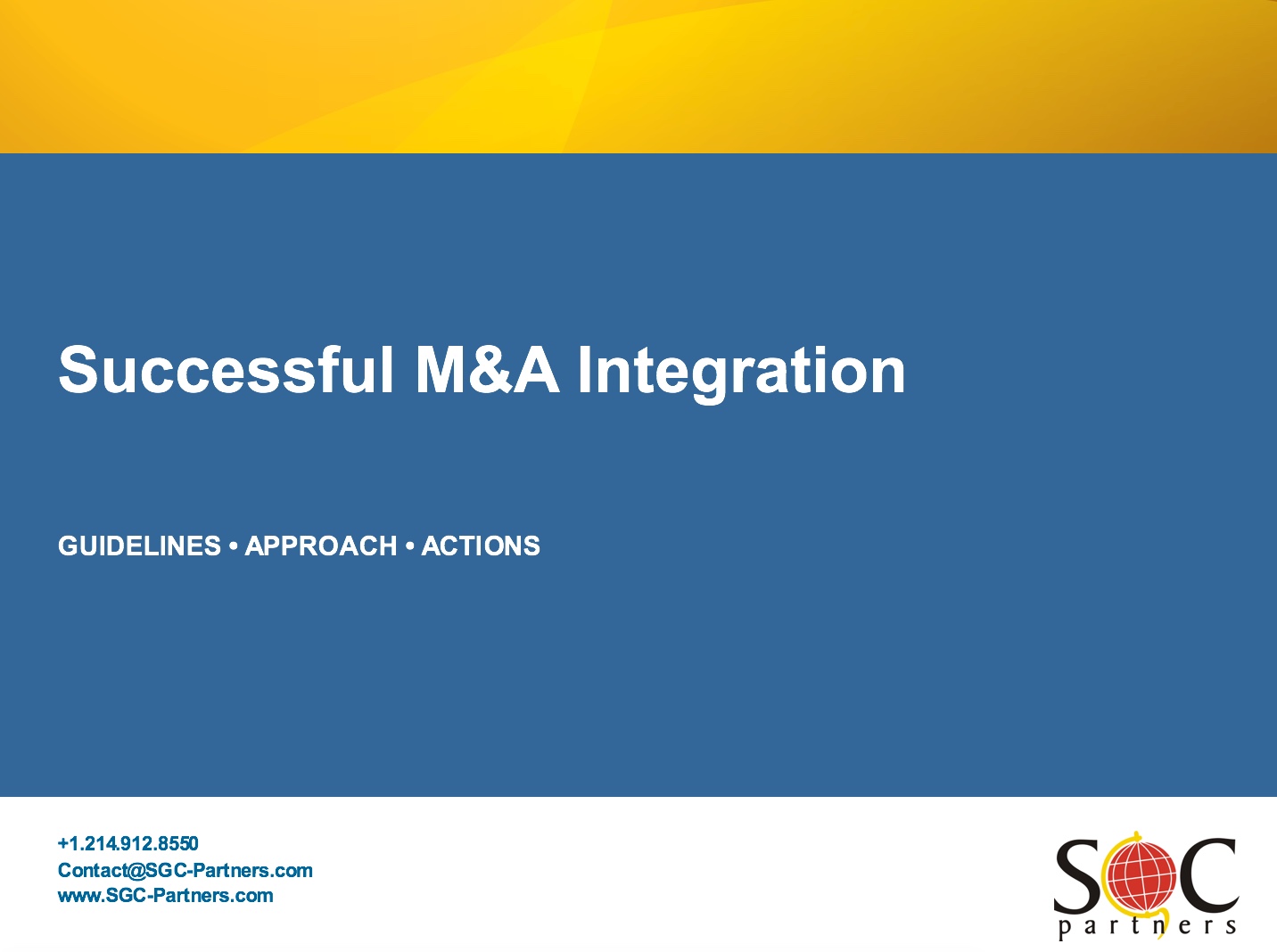Mergers and acquisitions which are well-conceived and properly executed can deliver greater value. As deal activity accelerates, some companies are improving. Although 10+ years ago about 50 percent of mergers in the US underperformed their industry index, recently, only about 30 percent were underperforming. One explanation is that some companies have learned to pursue deals closer to their core business, which increases the odds of success. More-frequent acquisitions have also motivated companies to develop repeatable models for successful integration. Despite these successes, many acquirers leave value on the table.
Companies continue to stumble in three broad areas of post-merger integration:
- Missed Targets
- Loss of Essential People
- Poor Performance in the Base Business
Avoiding the risks of a merger or acquisition, and to realizing the potential value is complicated by the simple fact that no two deals should be integrated in the same way, with the same priorities, or under the same timetable. The following two sections Ten Essential Guidelines and Scope vs. Scale Deals form the basis for the approach to a successful integration.
TEN ESSENTIAL GUIDELINES
- A clear deal thesis – money and risks
- Design the integration program to the deal
- Quickly settle organization issues
- Start integration planning before close and integration immediately after
- Manage decisions
- Handpick the leaders of the integration team – the “rising stars”
- Commit to one culture and stick to it
- Win hearts and minds – sell the deal internally
- Maintain momentum of both companies
- Invest in building a repeatable integration playbook
SCALE vs. SCOPE DEALS
INTEGRATION
Degree of Integration:
SCALE DEALS
- Integrate all activities comprehensively
- Coordinate the integration approach across functions, businesses, and regions
SCOPE DEALS
- Integrate selectively, only where there is overlap
- Ensure business models align and cross-fertilize strengths
Organizational Structure:
- Blend structures; assimilate where the target is small or under-performing
- Make decisions early, but don’t sacrifice more informed decisions for speed
- Keep organizations separate; blend governance at points of intersection
- Define the role of the center and regional/functional superstructure
- Make decisions as early as possible
Executive Selection:
- Select a portion of the target’s executives; select more where the target is larger or better performing
- Make decisions early, ideally before announcement
- Retain a high proportion of the target’s executives
- Make decisions at announcement
- Make retention a priority and offer retention incentives
Employee Retention:
- Target talent critical to the transition and integration activities
- Target talent critical to success of the company
Cultural Integration:
- Integrate the two cultures when both companies are similar in size, ideally by selecting the “best of both” or grafting best practices of the acquired company
- Win the hearts and minds of both companies’ employees
- Maintain the two cultures if necessary to preserve acquired business model and team
- Harmonize culture at a leadership level (clarify “way of working” and decision making)

